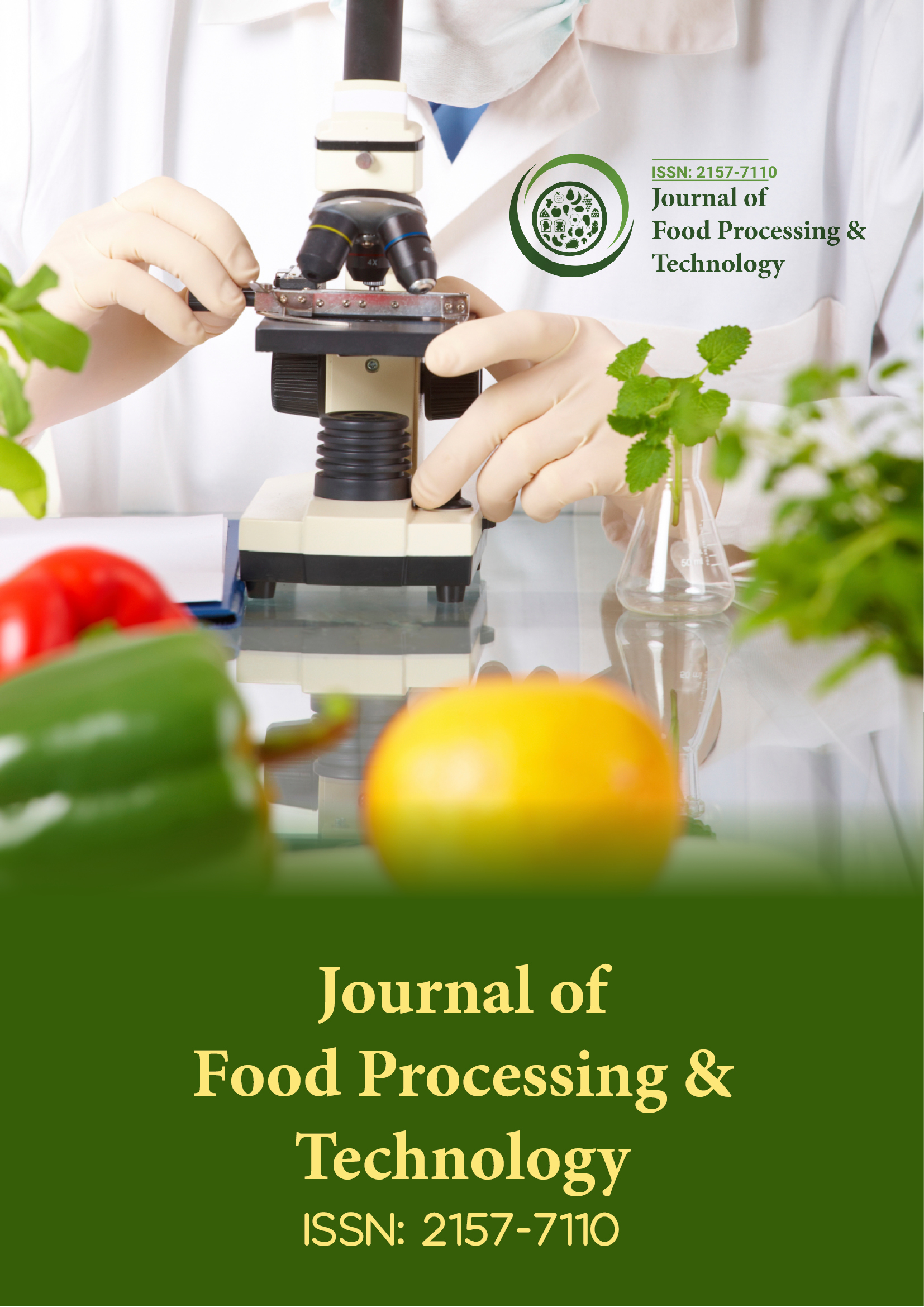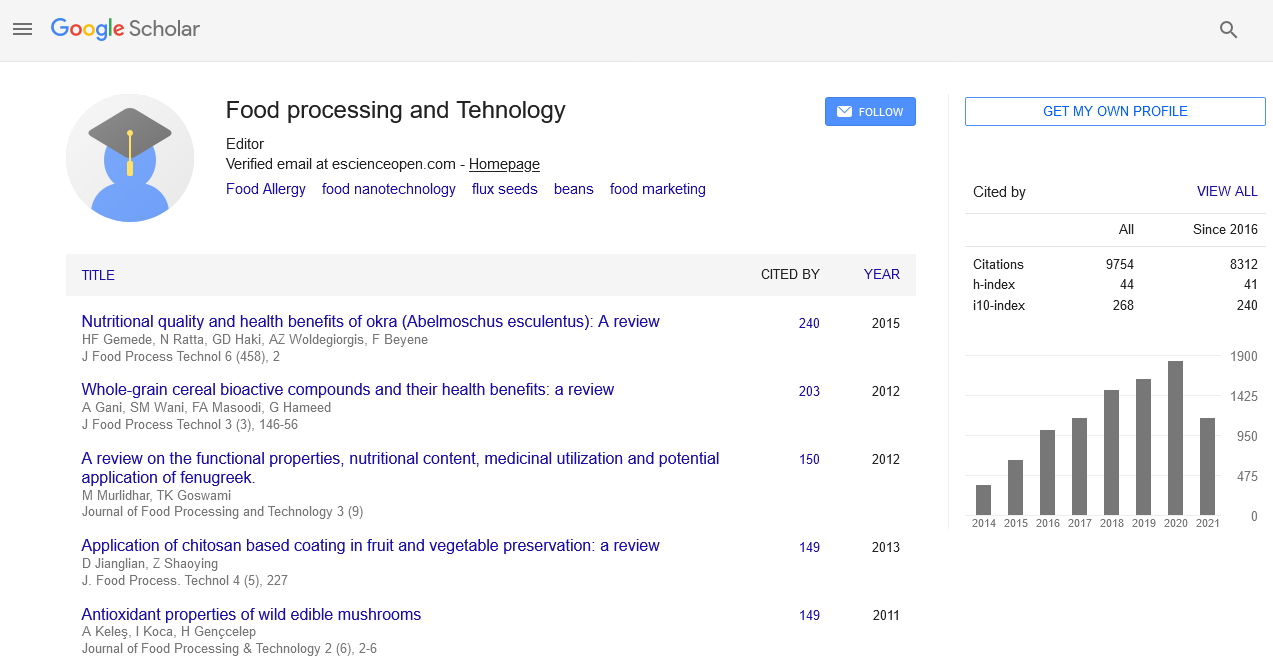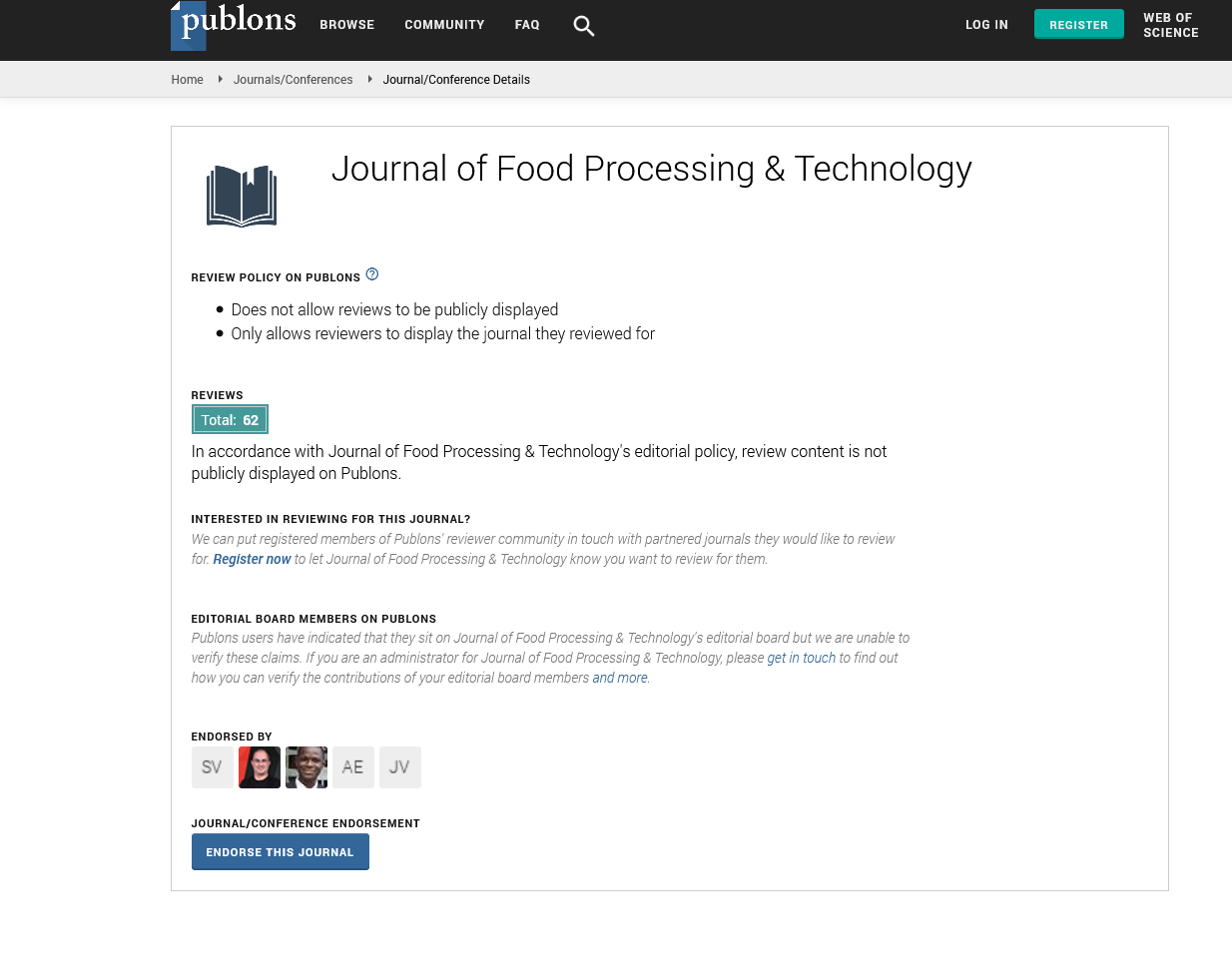Indexed In
- Genamics JournalSeek
- Academic Keys
- JournalTOCs
- China National Knowledge Infrastructure (CNKI)
- Access to Global Online Research in Agriculture (AGORA)
- Centre for Agriculture and Biosciences International (CABI)
- RefSeek
- Directory of Research Journal Indexing (DRJI)
- Hamdard University
- EBSCO A-Z
- OCLC- WorldCat
- Scholarsteer
- SWB online catalog
- Publons
- Euro Pub
- Google Scholar
Useful Links
Share This Page
Journal Flyer

Open Access Journals
- Agri and Aquaculture
- Biochemistry
- Bioinformatics & Systems Biology
- Business & Management
- Chemistry
- Clinical Sciences
- Engineering
- Food & Nutrition
- General Science
- Genetics & Molecular Biology
- Immunology & Microbiology
- Medical Sciences
- Neuroscience & Psychology
- Nursing & Health Care
- Pharmaceutical Sciences
Perspective - (2023) Volume 14, Issue 7
Modern Techniques for Utilizing Photosynthetic Microorganisms in Food Production
Wang Neng*Received: 03-Jul-2023, Manuscript No. JFPT-23-22563; Editor assigned: 07-Jul-2023, Pre QC No. JFPT-23-22563 (PQ); Reviewed: 21-Jul-2023, QC No. JFPT-23-22563; Revised: 28-Jul-2023, Manuscript No. JFPT-23-22563 (R); Published: 04-Aug-2023, DOI: 10.35248/2157-7110.23.14.1039
Description
Advantageous Photosynthetic microorganisms, such as algae and cyanobacteria, have stored increasing attention in recent years as potential sustainable sources of food and ingredients. Their exclusive ability to convert sunlight and carbon dioxide into valuable compounds presents a promising avenue for addressing global food security and sustainability challenges. The recent developments in the production and utilization of photosynthetic microorganisms for various food applications, importance their potential benefits, challenges, and innovative approaches.
Photosynthetic microorganisms can accumulate high levels of proteins, lipids, vitamins, and other nutrients, making them a potential source of nutrient-rich biomass for food production. These microorganisms can be harnessed to produce novel and sustainable food ingredients, such as proteins, lipids, pigments, and functional compounds that can enhance the nutritional profile and sensory attributes of food products. Photosynthetic microorganisms have a minimal environmental footprint, requiring only sunlight, carbon dioxide, and nutrients for growth. Their cultivation can occur in non-arable land and utilize non-potable water sources, reducing pressure on conventional agriculture.
Recent developments in production
Advances in genetic engineering and synthetic biology have enabled the modification of photosynthetic microorganisms to optimize their biomass composition and enhance the production of specific compounds of interest. Novel cultivation methods, such as photo bioreactors, open ponds, and bioprocess optimization, have been developed to improve biomass yield, productivity, and consistency. Co-cultivation of different microorganisms, such as algae and bacteria, can enhance nutrient cycling, biomass production, and overall system efficiency. Integrated bio refinery approaches aim to maximize the value obtained from photosynthetic microorganisms by utilizing various fractions of the biomass for different applications, including food, feed, and biofuel production.
Utilization of photosynthetic microorganisms in food applications
Microalgae proteins can be used as alternative protein sources in foods, such as plant-based meats, dairy alternatives, and proteinenriched products. Algae-derived omega-3 fatty acids, such as Eicosa Pentaenoic Acid (EPA) and Docosa Hexaenoic Acid (DHA), can be incorporated into functional foods and supplements to promote cardiovascular and cognitive health. Photosynthetic microorganisms can produce a wide range of natural pigments, including chlorophylls, carotenoids, and phycobilins, which can be used as natural colorants in various food products. Microalgae and cyanobacteria can synthesize bioactive compounds, such as antioxidants, polysaccharides, and exopolysaccharides, which have potential functional benefits in food formulations. Scaling up photosynthetic microorganism production from lab scale to commercial levels remains a challenge, requiring optimization of cultivation systems, light distribution, and nutrient management.
The cost effectiveness of large scale cultivation and downstream processing must be addressed to ensure the economic viability of photosynthetic microorganism based food products. Ensuring the safety and regulatory compliance of photosynthetic microorganisms and their derived products is essential for their successful integration into the food market. Developments in the production and utilization of photosynthetic microorganisms hold significant potential for transforming the food industry toward a more sustainable and resource efficient future. As technological advancements continue to drive innovation in strain engineering, cultivation practices, and downstream processing, the integration of these microorganisms into food applications has the potential to revolutionize the way we produce, consume, and think about food.
Citation: Neng W (2023) Modern Techniques for Utilizing Photosynthetic Microorganisms in Food Production. J Food Process Technol. 14:1039.
Copyright: © 2023 Neng W. This is an open access article distributed under the terms of the Creative Commons Attribution License, which permits unrestricted use, distribution, and reproduction in any medium, provided the original author and source are credited.


